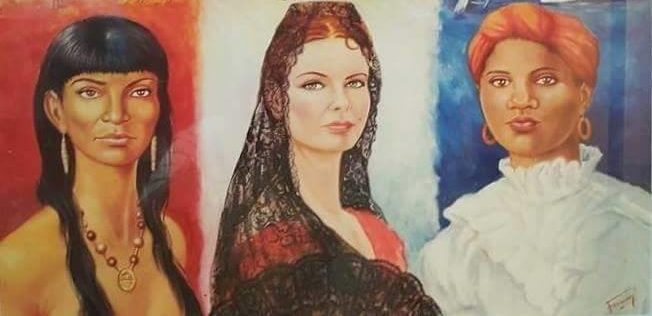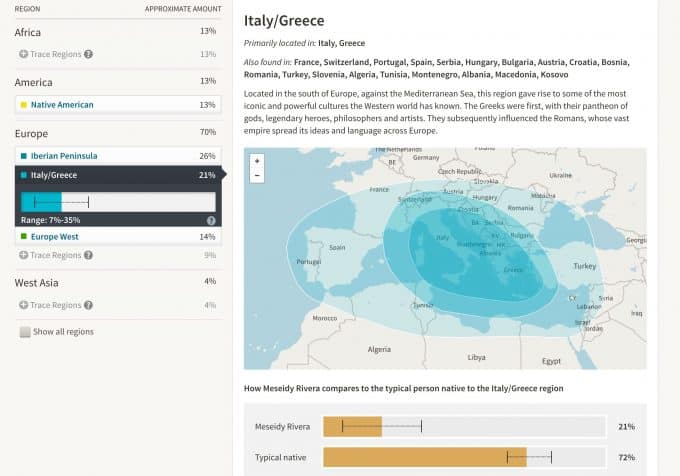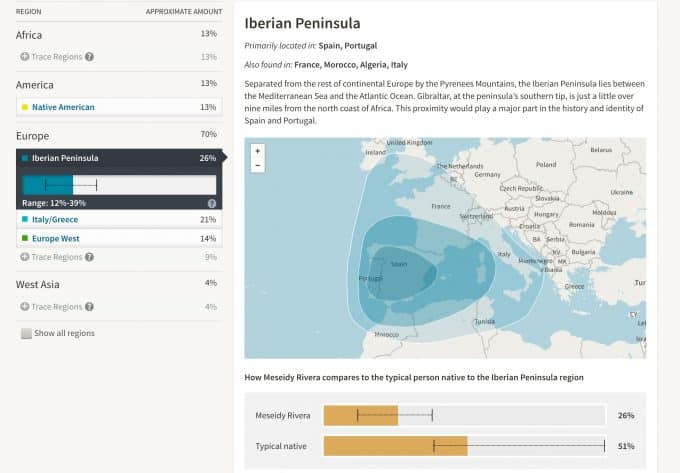- Spain Puerto Rican Genealogy Sites
- Spain Puerto Rican Genealogy Records
- Spain Puerto Rican Genealogy Information
- Spain Puerto Rican Genealogy Ancestry
Roberto is a Wiki Genealogy Volunteer following these tags: ESTRADA My father surname is Estrada. From Puerto Rico. Loocking for the connection from the Spain family and other latin america Estrada family GALARZA Galarza is my mothers surname. From Puerto Rico. Loocking for connection in Spain and other places Collaboration. Castillo de San Felipe del Morro is a fort that sits majestically on the northeastern coast of Puerto Rico in the capital city of San Juan. In 1983, the fort was declared a world heritage site by the.
Puerto Rican Ancestors
in
Spanish and American Military Records
-
By Miguel J. Hernandez y Torres
-
If you are in search of your Puerto Rican genealogical roots and confining yourself to civil and church records, I respectfully urge that you expand your quest to include military ones as well. As a general rule, modern day Puerto Ricans in the mainland U.S, and on the island, know little about Puerto Rico’s considerable military history and about the invincible courage of their ancestors who served in Spanish and subsequently, in American military services.
During the four centuries of Spanish rule and now, one century of American control, hundreds of thousands of Puerto Ricans have served with distinction in the respective armed forces of these nations. In the first four hundred years of Spanish domination
Puerto Rico was subjected to approximately eighty attacks by foreign nations including major invasions by England, Holland and the United States and in all of these instances, native born Puerto Ricans fought the invader. In the latter period of American influence, Puerto Ricans again answered the call to arms and served in World War I. World War II, Korea, Vietnam and Desert Storm.
SPANISH MILITARY RECORD SOURCES
Given this 500-year history of military duty, it’s easy to see that from a genealogical point of view the military service records of Puerto Rican men, and now women, are and important resource to family historians and genealogists. This is particularly so when you considers that practically since its founding as a colony of Spain in 1509 to 1898, practically every town in Puerto Rico of any size had a company of militia infantry, artillery or cavalry. More to the point, every male ages 16 to 60 was obliged to serve in these companies, unless, he had an official exemption on account of physical disability or family hardship.
These companies, were of collectively known as milicias, The Milicias Urbanas de
Puerto Rico was first organized in 1693 and reorganized in 1765 as the Milicias Diciplinadas de Puerto Rico. After the Lares Uprising of 1868, the Spanish doubting the loyalty of Puerto Ricans, began to disband these companies, including the Compania de Artilleros Morenos de Cangrejos, a separate company of black Puerto Ricans. The milicias, are the direct lineal ancestors of two of today’s Puerto Rico National Guard Units, the 295th and 296th Infantry. The milicias were replaced in 1871 by another similar organization, El Instituto de Voluntarios.
These men were Spaniards and other loyalist émigrés from Spain’s former colonies in South America, principally Venezuela. The Voluntarios 18,000 strong were also known as incondicionales because they all belonged to a political organization known as, Incondicionalmente Espa?ol en Puerto Rico. Membership in this organization was considered prestigious and an ideal way to achieve public office in Puerto Rico and in the 1880s, native-born Puerto Ricans began to join it.
Another Puerto Rican military unit that family researchers need to know about is the Regimiento Fijo de Puerto Rico organized in 1741.The Fijo as it was known, came about because the Puerto Rican criollos had for some time been petitioning the Spanish Crown to allow Puerto Ricans to serve in the regular Spanish army. Up to that time criollos were not allowed to serve as regular, full-time soldiers.
The Fijo not only served in the defense of Puerto Rico but in Spain’s overseas possessions as well. It covered itself with glory in battles in Santo Domingo, other islands in the Caribbean and in South America, most notably in Venezuela. However, Puerto Rican complaints that the Fijo was being used to suppress the revolution there caused the Crown to bring the Fijo home and in 1815, mustered it out of service.
In any case, the Hojas de Servico – service records of Puerto Ricans serving in any of the above referenced military units that served in the Spanish period may be able to find them by contacting:

El Coronel Jefe
Archivo General Militar de Segovia
Plaza Reina Victoria Eugenia s/n
40071 SEGOVIA, ESPANA
It helps matters if your letter is in Spanish and provides as much identifying information about your ancestor as you can especially his full, complete name, e.g., Jose Dolores Fuertes de Barriga. Include the service unit you suspect he served in, e.g. Milicias Diciplinadas, Instituto de Voluntarios, or the Regimiento Fijo or of one of the various Spanish units that served in Puerto Rico, from time to time.
In addition to the Hojas de Servicio which contain the dates, places of service, rank, medals and decorations and, performance evaluation of the soldier, there are other types of records. One of these is expedientes matrimoniales – authorization to marry. This document can of course help trace other information regarding the soldier and his wife’s ancestry. A complete list of the types of documents available is contained in the triptico or brochure that the Archivo General Militar A.G.M. publishes.
Most of the documents of interest to Puerto Rican family historians may be found in: Section 4 (Ultramar) (En El Servicio Historico Sections 6 & 8 (Ultramar, Capitanias y Gobiernos. Several of the subsections here also refer to Cuba but don’t fail to request items in listed in the Cuba folders. Remember that Cuba, Puerto Rico and for that matter Santo Domingo, were at times administratively treated as one so there could be records pertaining to Puerto Rico in a Cuba folder. In any case, do not request more than five (5) types of documents for each inquiry letter you send to the A.G.M
Spain Puerto Rican Genealogy Sites
The A. G. M. can also be contacted by phone 921 – 4607 – 58. The fax number is
921 – 4607 – 57. First dial 011 for the overseas connection the 34 which is the country code for Spain. Another source for military records of the Spanish period is the Archivo General de Los Puertorriquenos in San Juan, PR where there is a card index of military personnel. There is also some information on military families. Much of the information is extracted from the A.G.M. in Segovia, Spain.
Additionally, Puerto Rican family researchers should request Microfilm 1,15632 from the Family History Center in Salt Lake City, Utah. I have ordered a copy of this microfilm and donated it to the Puerto Rican/ Hispanic Genealogical Society it can be viewed at the Family History Library in Plainview, Long Island. This record contains information and service records for Spanish and Puerto Rican military men in the Regimiento Fijo de Infanteria for 1793,1795, 1799, and 1800. Also included are records for the Cuerpo de Milicias Diciplinadas for 1795

UNITED STATES MILITARY SOURCES:
Spain Puerto Rican Genealogy Records
Just as the Spain did when it controlled Puerto Rico, the United States began to enlist men in the defense of the island. In 1899, the U.S. Congress authorized the establishment of a military unit comprised of Puerto Ricans and in 1900 the Porto Rico Battalion was established. Through successive reorganizations this unit became the Porto Rico Voluntary Infantry, The Porto Rican Provisional Regiment of Infantry, the Porto Rico Regiment,
U.S. Infantry and finally in 1920, the 65th Regiment, U.S. Infantry.
The Porto Rico Regiment, U.S. Infantry, 4,000 strong, served in World War I. From 1917 to 1919 it guarded the Panama Canal. During this period, the Porto Rico National guard also came into existence with the creation of the 295th and 296th Infantry Regiments. Additionally, several “Home Guard” units were organized and many other Puerto Ricans living in the continental U.S. served in mainland units that fought in Europe. Dark skinned Puerto Ricans were placed in such racially segregated units as the 396th Infantry, “The Harlem Hell Fighters” who fought under French command. Rafael Hernandez the famous Puerto Rican musician/composer and his brother, Jesus, served in that unit’s band. All told, 236,000 Puerto Ricans registered for the WWI draft and 18,000 served in the military.
Draft Registration records for Puerto Rico may be found at the National Archives and Records Administration (NARA) located at Seventh & Pennsylvania Ave Washington, DC 20408 and at its New York Regional Center at 201 Varick Street in New York City. These records contain the name date of birth and other identifying data of the registrant. They are organized by name, alphabetically, and by municipality.

Records of men who actually served in the Puerto Rican unit in World War I may also be found at the NARA .ask for a record called “Special Enlistments & Miscellaneous Registers – Porto Rico Provisional infantry 1901-1919.”
During WWII approximately 65,000 Puerto Ricans served in the U.S. armed forces and the 65th Infantry Regiment “Puerto Rico’s Own” saw combat in the Italian-French Border in the winter of 1944. Records for this unit can be found at the NARA in College Park Md. There are some five boxes of documents recording various troop movements and actions including names of personnel and awards made to them
Records relating to the 65th Regiment in the Korean War are at this writing October 19, 1997 in transit from the main NARA center in the District of Columbia to the new center in nearby College Park MD.
Individual Service records for persons who served in any branch of the military in WWII the Korean War, or who served in peacetime, can be obtained by next of kin (includes grand-children) by writing to:
Spain Puerto Rican Genealogy Information

Spain Puerto Rican Genealogy Ancestry
National Personnel Records Center
9700 Page Blvd.
St. Louis MO 63132
You must provide as much identifying information as you have such as: full complete name, date and place of birth, branch of service, rank approximate years of service –e.g. 1950 –1953, serial number, etc. Also include in your letter this statement: Request all releasable information under the Freedom of Information Act.
The more you complete your request the easier it will be for the NPRC people to find your ancestors record. However, be advised that in July, 1973 the was a fire at the NPRC which destroyed about 80% of the records for Army personnel discharged between November 1, 1912 and January 1, 1960. It takes about four (4) to six (6) months to process requests. There is no charge for this service.
La Genealogía de Puerto Rico expresses it thanks to
Miguel J. Hernandez for presenting his article here.
-
Copyright 2005 © Miguel J. Hernandez
